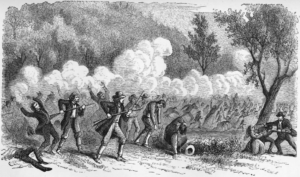The Mountain Meadows Massacre and Its Aftermath:
Facing the Past, Pursuing Peace and Reconciliation in the Present
Guides: Richard E. Turley, Jr. and Barbara Jones Brown
Some walking will be required. Tour goers are advised to bring hats, and sunscreen.

tqsmith, CC BY-SA 4.0, via Wikimedia Commons
On September 11, 1857, a group of Mormon settlers in southwestern Utah used false promises of protection to coax a party of California-bound emigrants from their encircled wagons and massacre them. The slaughter left the corpses of more than 100 Arkansans strewn across a highland valley called the Mountain Meadows, about thirty miles north of today’s St. George. Richard E. Turley, Jr. and Barbara Jones Brown, authors of Vengeance is Mine: The Mountain Meadows Massacre and Its Aftermath, will guide tour goers to the hallowed ground of the Mountain Meadows and its monuments, sharing the story of what happened there and the historical context of this horrific event.
We’ll then delve into the aftermath of the massacre, starting in Washington, Utah, from where a contingent of the massacre perpetrators alighted. Several of these men and their families had just recently left Apostle Lyman Wight’s splinter group in Texas to join the “Brighamites” in Utah. One of these settlers, John Pierce Hawley, denounced the massacre in its immediate aftermath and later left Utah to join the Reorganized Church of Jesus Christ of Latter-day Saints in Iowa.
Finally we’ll explore modern-day sites and stories of both divisive and reconciliatory efforts after the massacre, including: (1) the controversy over a heroic-sized statue of massacre perpetrator John D. Lee that was supposed to be placed in Washington but was ultimately voted down; (2) the recently dedicated statue of southern Utah historian Juanita Brooks, who courageously brought her community’s hidden secret to light by publishing the The Mountain Meadows Massacre (1950); (3) and a stunning “Mountain Meadows: Remembrance and Reconciliation” friendship quilt, created by dozens of descendants of massacre victims and perpetrators in the early 2000s, on permanent display in the Historic Pioneer Courthouse in St. George.

T.B.H. Stenhouse, Public domain, via Wikimedia Commons


